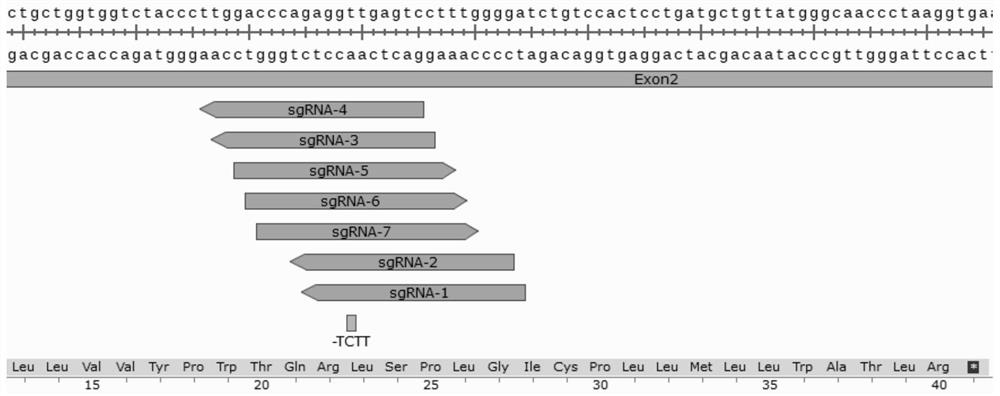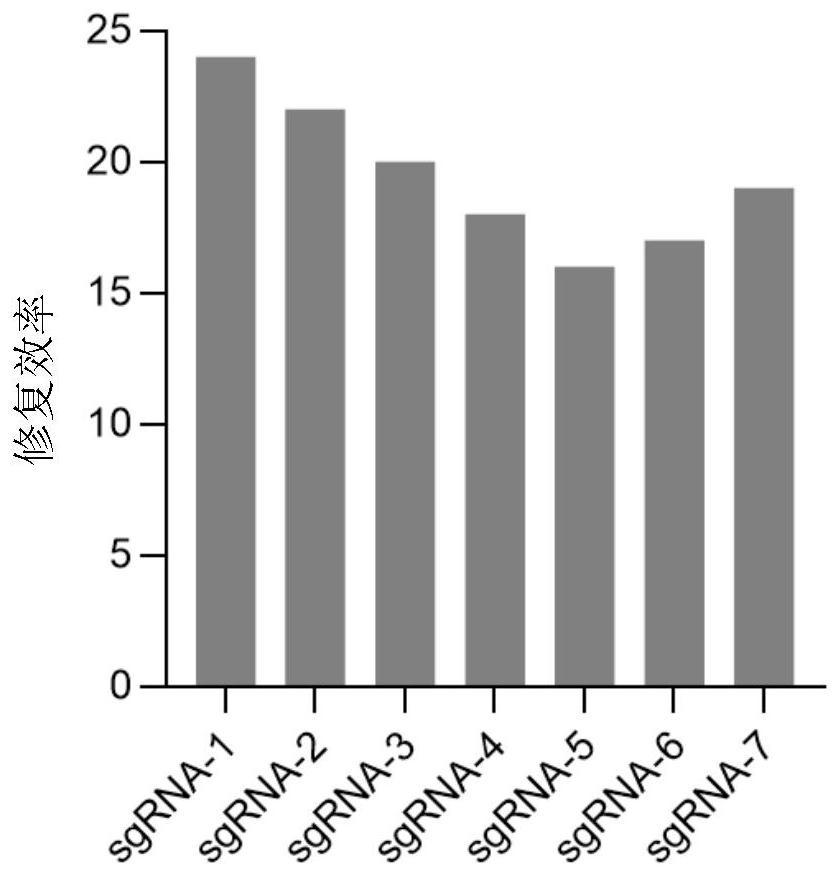Method and product for repairing HBB gene of hematopoietic stem cell
A cell and gene technology, applied in the field of hematopoietic stem cell HBB gene repair, can solve the problems of inability to achieve life-long cure, high requirements for equipment and technology, semi-random, etc.
- Summary
- Abstract
- Description
- Claims
- Application Information
AI Technical Summary
Problems solved by technology
Method used
Image
Examples
Embodiment Construction
[0021] In one aspect, the present invention provides a method for repairing HBB (beta-globin gene) codon frameshift mutations in cells, including the steps of introducing nuclease and sgRNA into cells and editing the HBB gene, and the sgRNA guides The nuclease cuts the HBB gene and forms a break site; the codon frameshift mutation is a frameshift mutation caused by the mutation of codon 41 / 42 (-TCTT); the sgRNA targets the targeting sequence of the HBB gene Including the upstream 1bp of the codon 41 / 42 (-TCTT) site;
[0022] Preferably, the targeting sequence of the sgRNA targeting the HBB gene comprises the sequence shown in any one of SEQ ID No.1-7; more preferably, the targeting sequence of the sgRNA targeting the HBB gene comprises SEQ ID No. 1 for the sequence shown.
[0023] The nuclease is selected from one or more of Cas9, Cas3, Cas8a, Cas8b, Cas10d, Cse1, Csy1, Csn2, Cas4, Cas10, Csm2, Cmr5, Fok1, Cpf1; preferably, the nuclease is Cas9; more preferably, the Cas9 is ...
PUM
 Login to View More
Login to View More Abstract
Description
Claims
Application Information
 Login to View More
Login to View More - R&D
- Intellectual Property
- Life Sciences
- Materials
- Tech Scout
- Unparalleled Data Quality
- Higher Quality Content
- 60% Fewer Hallucinations
Browse by: Latest US Patents, China's latest patents, Technical Efficacy Thesaurus, Application Domain, Technology Topic, Popular Technical Reports.
© 2025 PatSnap. All rights reserved.Legal|Privacy policy|Modern Slavery Act Transparency Statement|Sitemap|About US| Contact US: help@patsnap.com



